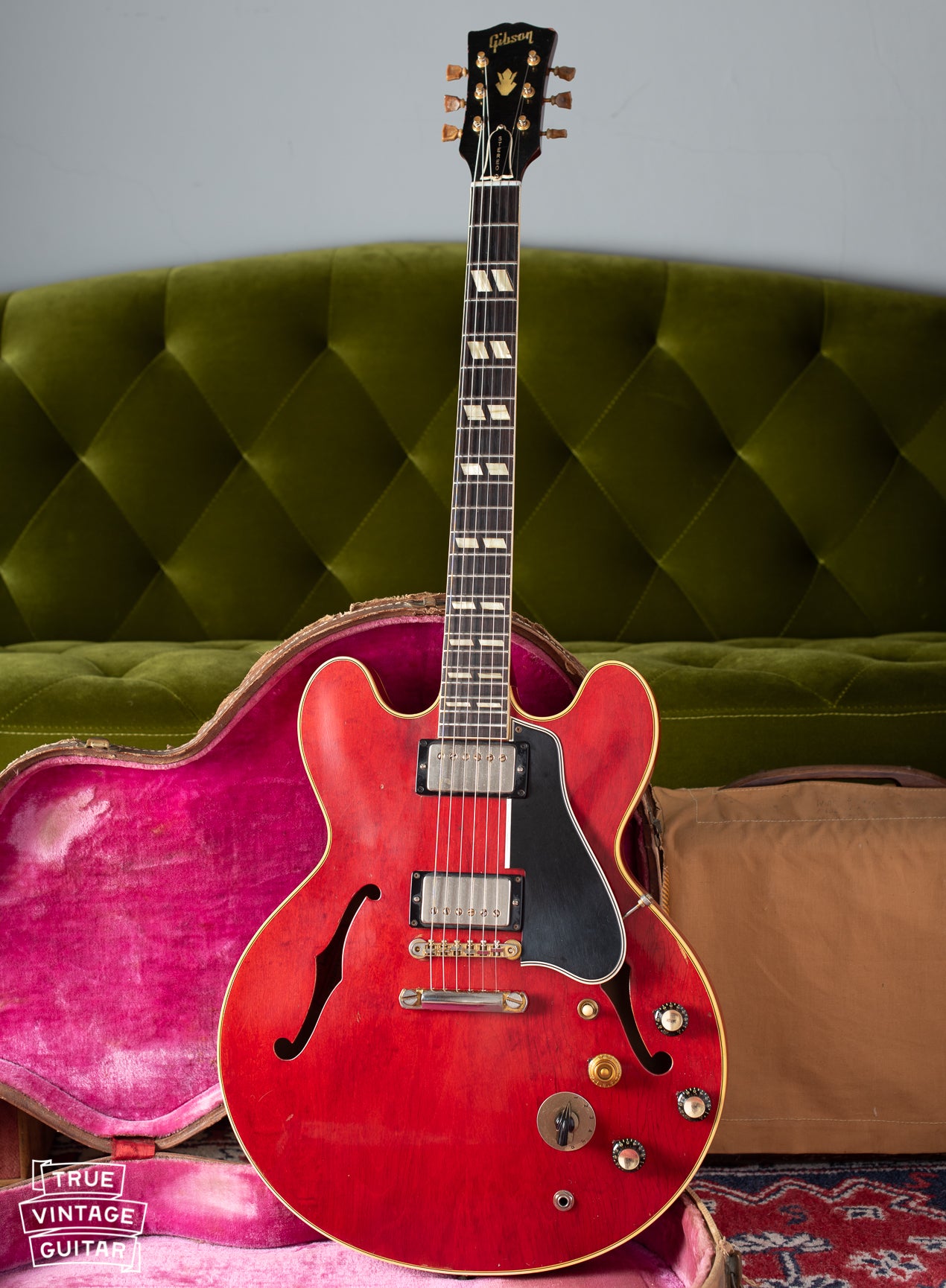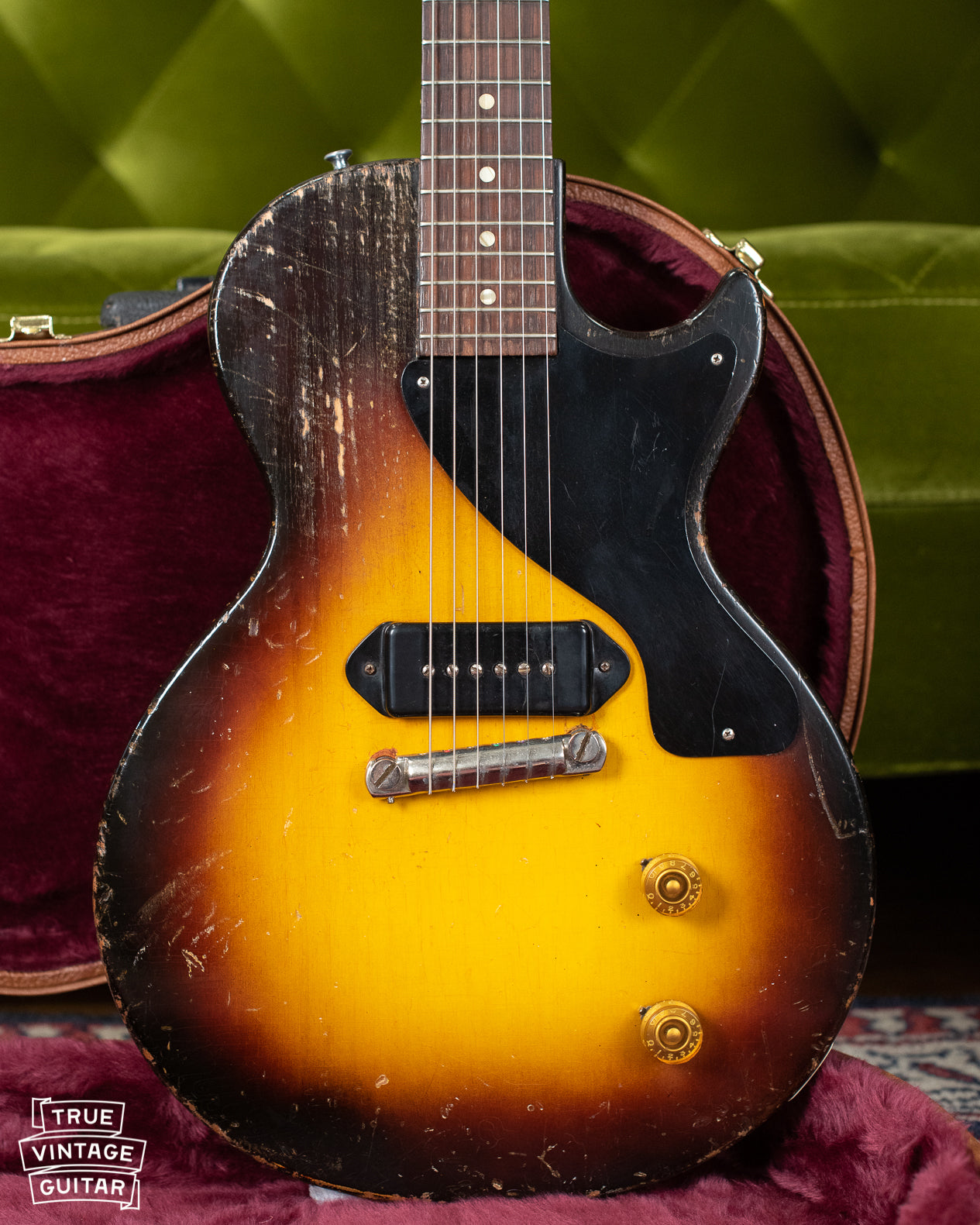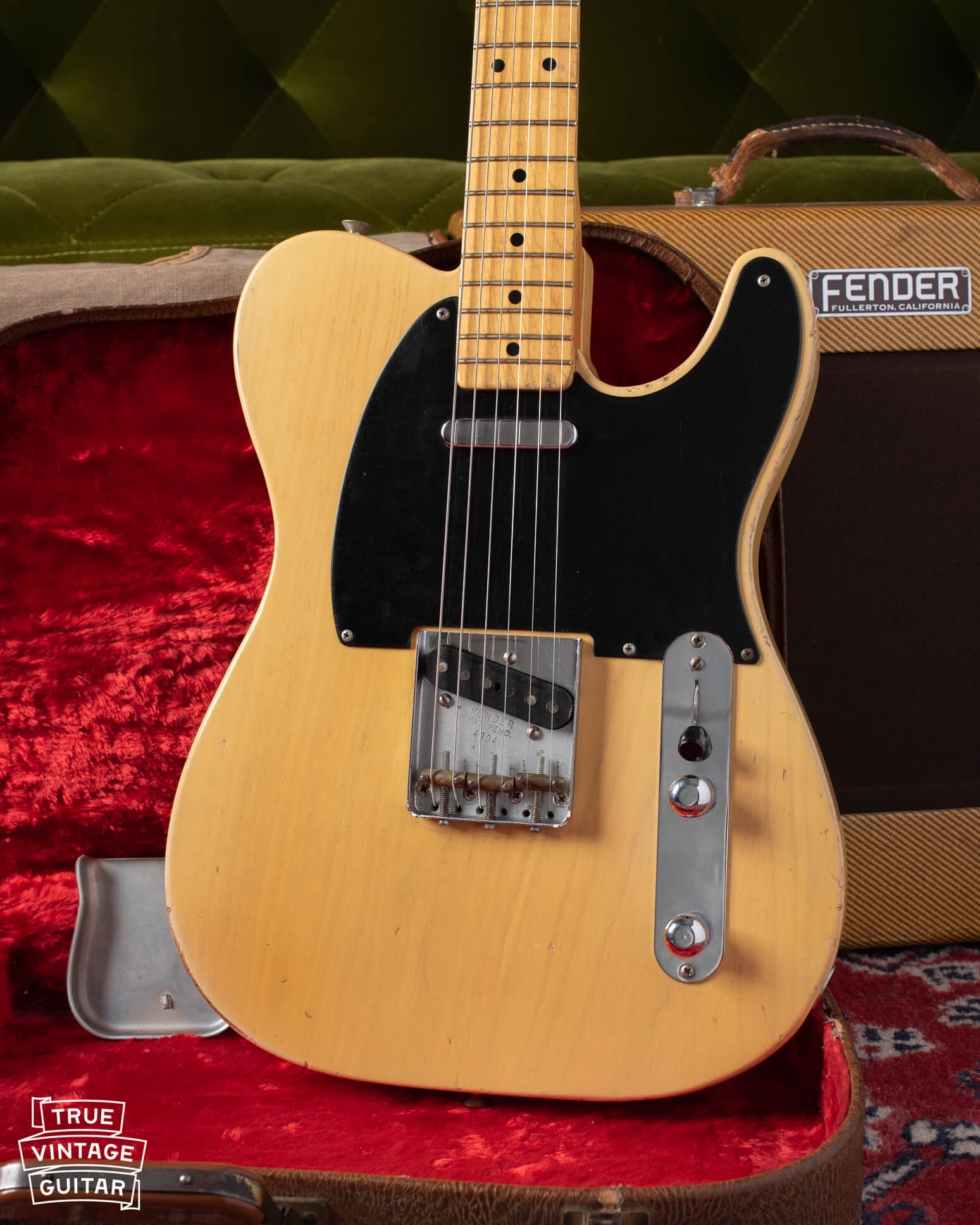The Gibson ES-345 model was the company's first to feature the brand new Stereo wiring with Varitone switch in 1959. These two Gibson ES-345 examples from 1960 and 1967 illustrate the vast differences in the early 1960s compared to the later 1960s after company President Ted McCarty left Gibson to run his newly acquired Bigsby company he relocated down the street in Kalamazoo, Michigan. While the differences between and ES-345 from 1960 and 1967 are significant, both of these examples are among my favorite guitars to ever come through True Vintage Guitar.
The Gibson ES-345 model is identified by its thinline semi-hollowbody design, two humbucking pickups, Stereo wiring with Varitone switch, and split parallelogram fretboard inlays. It was the mid-grade in the ES-3x5 range, but was the last of the three to be introduced after the ES-335 in 1958 and the ES-355 earlier in 1959. Unlike the ES-335 and ES-355, the ES-345 was and is offered exclusively with the Stereo wiring and Varitone switch.
I'm always a Gibson guitar buyer but I'm especially looking for clean examples of all three of the Gibson ES-3x5 line from the late 1950s and 1960s. You can contact me here to sell a Gibson guitar.
You can check out more pictures and information on these guitars here:

Gibson ES-345 Values
As with all Gibson guitars, the Gibson ES-345 model varies wildly in value depending on the exact year it was made, the condition, the color, and also the story. The most desirable ES-345 guitars usually come from what Gibson collectors call the "first rack" of Gibson ES-345s to be made. The term is a bit of a misnomer since Gibson's rolling racks for guitar production held only 40 guitars each, but the first batch of guitars included 80 plus guitar. The better term might be "first batch", but first rack sounds guitar too. Gibson collectors consider earlier guitars to be more desirable than later guitars, but the most significant year to determine value would be 1965. Gibson ES-345s made in early 1965 and before have a wider nut width which is more comfortable for most players. The mid 1965 and later Gibson ES-345 have what's called the skinny neck that measures about 1 9/16" compared to the earlier style 1 11/16". The wider neck guitars are almost always more valuable and higher priced than the skinny neck guitars.

The other significant difference which can determine the value of a Gibson ES-345 guitar from the late 1950s and 1960s is the tailpiece style. Gibson guitar collectors prefer the stop bar tailpiece (often called stop tail) over the Bigbsy vibrato and the trapeze style tailpiece found in late 1965 and later. The stop bar tailpiece utilizes threaded studs inset into the body behind the bridge to mount the tailpiece. Many players including this author find that the stop bar or stop tail transfers energy and resonance to the body more efficiently than the other tailpiece options. The stop bar tailpiece is only found on Gibson ES-345 guitars made from 1959 until early 1965.

How to date a Gibson ES-345 guitar
Knowing how to date a Gibson ES-345 guitar is vastly important to establishing its value. As a Gibson guitar expert, here are the steps I take when trying to find out how old is my Gibson ES-345: serial number, neck width, color, and body shape. We can't use the potentiometer codes to date a Gibson ES-345 since they're inside the metal covers soldered to the pot. Here's a quick link to the relevant serial numbers for Gibson ES-345 guitars: Gibson ES-345 serial numbers.
The other features important to Gibson guitar dating include the neck width and body shape. Gibson ES-345 guitars made between 1959 and 1965 should have the wider neck style that measures 1 11/16". There's a short time period in 1965 when Gibson produced guitars with a transitional nut width measuring 1 5/8", but by the end of 1965 all of them measured the skinnier style 1 9/16". The body shape is a bit more difficult to nail down, but Gibson ES-345s from 1959 until about 1963 have a more rounded wing shape that Gibson guitar collectors refer to as "Mickey Mouse ears". See if you can tell the difference in the two Gibson ES-345s here. The 1960 guitar has more rounded cutaways, but the 1967 Gibson ES-345 has more pointed cutaways at the top.
More information on Gibson ES-345 guitars
If you're looking for a Gibson guitar expert to help identify your Gibson ES-345 guitar then you can contact me here: Sell a Gibson guitar. You can read more about Gibson ES-345 guitars here: The Gibson ES-335: Its history and its players. Get help with Gibson guitar dating here: How to date a Gibson ES-335 guitar.



